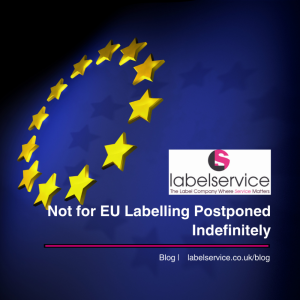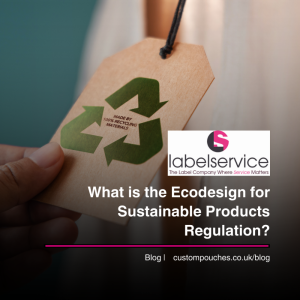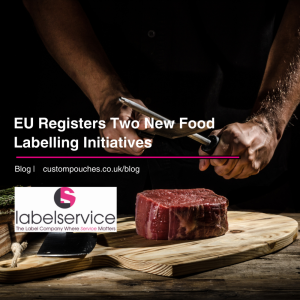The UK now has a suite of tobacco control legislation which is among the most comprehensive in the world. Over recent years a range of legislation has been introduced to discourage young people from taking up smoking or vaping, encourage existing smokers to quit, and to protect others from the harmful effects of cigarette smoke. This has included a curb on advertising, establishing smoke-free places, introduction of prominent graphic health warnings, a ban on proxy purchasing of cigarettes and e-cigarettes and a ban on smoking in cars with children as well as the introduction of standardised packaging.
More recently, Parliament has introduced further regulation to strengthen tobacco control introducing the Tobacco and Related Products Regulations 2016 (TRPR), which regulated the presentation of tobacco and e-cigarettes, along with the Standardised Packaging of Tobacco Products Regulations 2015 (SPoT) which introduced standardised packaging for cigarettes and hand rolling tobacco.
The UK has now left the EU. The government has made the necessary legislative amendments to TRPR that came into force on 1 January 2021, so that rigorous tobacco control measures will continue to apply in Great Britain and that for products placed on the Northern Ireland market – the Tobacco Products Directive (TPD) will continue to apply as implemented in the TRPR.
Legislation
Great Britain no longer has to comply with the EU’s Tobacco Products Directive and there is opportunity to consider, in the future, further regulatory changes that help people quit smoking and address the harms from tobacco. Any changes to do so will be based on robust evidence and in the interests of public health. This review may help to consider some of the potential changes to be considered.
The overarching policy objective of all smoking legislation is to improve public health, however, each individual piece of legislation also has specific aims and objectives. The purpose of The Tobacco and Related Products Regulations 2016 (TRPR) implement the majority of provisions from the Tobacco Products Directive (2014/40/EU) to:
- continue, and enhance in some areas, the reporting of ingredients and emissions of tobacco products
- increase the size of combined health warnings consisting of a text and photograph warning, increased in size to cover 65% of front and back of pack (previously 30% on front of pack and 40% on back of pack)
- prohibit misleading descriptors, such as ‘natural’ or ‘organic’ on tobacco and electronic cigarette labelling
- prohibit characterising flavours such as menthol in tobacco products
- provide for prior notification of the placement of novel tobacco products on the market
- regulate electronic cigarettes and associated refill cartridges (notification of placing on the market, adverse event monitoring, product standards, labelling and advertising)
- regulate herbal cigarettes (notification of placing on the market and labelling)
TRPR’s public health policy objectives are:
- discouraging people from starting to use tobacco products
- encouraging people to give up using tobacco products
- protect young people from the harms of tobacco
- implementing elements of the World Health Organization Framework Convention on Tobacco Control
The health text and picture warnings includes, graphic health warnings with photos, text and cessation information increased in size covering 65% of the front and the back of cigarette and hand rolling tobacco (HRT) packs. Depicting the social and health impacts of smoking, the warnings are designed to discourage people from smoking or encourage them to quit. However, not all tobacco products are required to have a picture warning, such as smokeless tobacco, novel tobacco products and individual cigars.
The government continues to review the evidence of e-cigarettes including their harms and usefulness to aid stop smoking. There are around three million e-cigarette users in the UK and over half of those people have quit smoking. Although not risk free, current evidence suggests they are far less harmful to health than smoking, and can help people stop smoking ‒ even more so when combined with expert support from a local stop smoking service.
The government believes in proportionate regulation of e-cigarettes, recognising that they are not risk free. The current regulatory framework in TRPR aims to reduce the risk of harm to children, protect against renormalisation of tobacco use, provide assurance on relative safety for users, and provide legal certainty for businesses. The government will continue its work to appraise the evidence on new products, including e-cigarettes, and their role in helping smokers quit and that the regulatory framework supports this.
To help compliance with the regulations, penalties were introduced. The majority of the regulations are enforced by Trading Standards Officers (or Environmental Health Officers in Northern Ireland). These agencies are currently designated as enforcement authorities for existing labelling and consumer protection standards for the categories of product covered by the regulations. The rules for advertising electronic cigarettes are enforced by the agencies which enforce the rules on tobacco advertising. The Office of Communications (Ofcom) enforces the rules for broadcast media, and local authority trading standards will enforce the non-broadcast media rules with the Advertising Standard Authority undertaking a first line self-regulatory check on the industry.
The Netherlands
The Netherlands was the first country in the European Union to begin readjusting regulation in line with the EU’s Tobacco Products Directive (TPD). Dutch law tends to equate e-cigarettes with tobacco products, especially in the areas of sales and advertising, and public usage. The Tobacco and Smoking Products Act defines e-cigarettes as a tobacco-related product.
The Dutch government discourages smoking. Therefore the Dutch Tobacco Act (Tabakswet) contains rules designed to reduce the sale of tobacco products and electronic cigarettes.
The Dutch Tobacco Act applies to:
- tobacco (such as cigarettes, cut tobacco, cigars, pipe tobacco, water pipe tobacco)
- electronic cigarettes containing nicotine
- electronic cigarettes without nicotine (shisha pens)
- refill containers for electronic cigarettes (e-liquids)
- components of electronic cigarettes
You may only sell tobacco products and electronic cigarettes to people aged 18 and older. This must be displayed clearly for everyone to see. The sale of e-cigarettes without nicotine to under-18-year-olds is prohibited. The sale non-nicotine-containing refill fluids and herbal mixes without nicotine for the waterpipe to under-18-year-olds is prohibited.
You cannot sell tobacco products, electronic cigarettes and refill containers to people aged 18 or older if you suspect they want to give or sell these products on to younger people. You must ask for proof of ID to establish the person’s age. This is not mandatory for those who are obviously older than 18. Employees selling tobacco must be aged 16 years or older.
The sale of flavoured cigarettes, cut tobacco and click dual-flavoured cigarettes is prohibited. The sale and production of menthol cigarettes is prohibited as well as the sale of single cigarettes prohibited. You are not allowed to take cigarettes out of a package to sell them by the piece.
You may only sell cigarettes and rolling tobacco in plain, dark green-brown packages. Besides the mandatory health warnings (image and text), only the manufacturer’s name, the type of cigarettes and barcode may be printed on the packet. The information must be set in a standard typeface. Stores may sell out their old stock.
You may not display tobacco products (in Dutch), for instance in a display, showcase, or on the counter. The outlines of the packets should not be visible either: the products should be kept so that they are not visible at all, for example in a cupboard or drawer. This includes electronic cigarettes and herbs intended for smoking. Any place used to store smoking products should be neutral looking: cupboards or drawers should be black, white or grey, should not contrast with the rest of the shop, and cannot be decorated in any way. You can display smoking accessories, such as ashtrays and lighters. Specialist tobacco shops are in some cases exempted from the ban on displaying smoking products. For this, they need to be registered with the Netherlands Food and Consumer Product Safety Authority (NVWA).
France
France became a Party to the WHO Framework Convention on Tobacco Control on February 27, 2005. All forms of domestic and cross-border tobacco advertising and promotion are prohibited, subject to a few exceptions. Product display is currently allowed at points of sale. All forms of financial or other sponsorship by the tobacco industry are prohibited. However, the law allows the rebroadcast of motorsport competitions containing direct or indirect advertising of brand stretching products and that take place in countries where tobacco advertising is allowed.
Standardized (plain) packaging is required for all packs of cigarettes and rolling tobacco. Packaging must be a standard colour, size, and shape and may only contain specified information and the prescribed health warnings. All smoked tobacco products must carry combined text/picture health warnings occupying 65 percent of the front and back of the tobacco product package. Warnings are required to rotate. One general warning and one informational message on constituents and emissions must occupy 50 percent of each side of the package. For smokeless tobacco products, one authorized text warning must occupy 30 percent of the front and back of the tobacco product package. Misleading packaging and labelling, which could include terms such as “light” and “low tar” and other signs, is prohibited.
Prior to becoming a party to the WHO Framework Convention on Tobacco Control, France had strong tobacco control legislation providing a ban on tobacco advertising and a ban on smoking in indoor public places and workplaces. The ratification of the FCTC in 2004 contributed to the enforcement and regulation of tobacco control measures and to the improvement of existing legislation to ensure that France aligns with best practices.
Canada
Canada has similar laws to the UK and other countries. Their required size of warnings is larger than most at 75% of front and back. Packages of smoked tobacco products must depict up to three types of labelling: health warnings, health information, and toxic emissions. Packages of all smoked tobacco products must contain health warnings. Packages of most smoked tobacco products must also contain health information and toxic emissions.
Packages of cigarettes and little cigars must contain one of 16 “health information” messages on an insert of approximately 50mm X 88mm or, in the case of slide and shell packages without a lateral side, the health information message must appear either on the upper slide-flap and the exterior surface of the slide portion of the package or on a leaflet inserted into the package.
Ensuring the proper application of the legislated labels and packaging is extremely important to ensure compliance and avoid penalties. Most countries have similar laws governing tobacco in all of its forms and those that don’t would do well to follow those that do. Manufacturers everywhere can simply comply with their country’s rules or they could take a step forward and start packaging and labelling their products based on the toughest regulations. Most countries will get there eventually so it could start with the manufacturers without being legislated to do so.

















